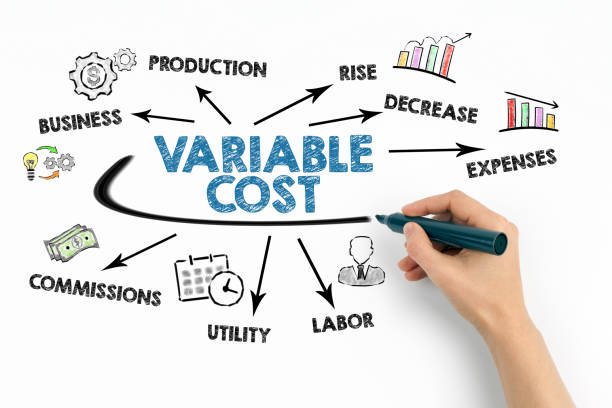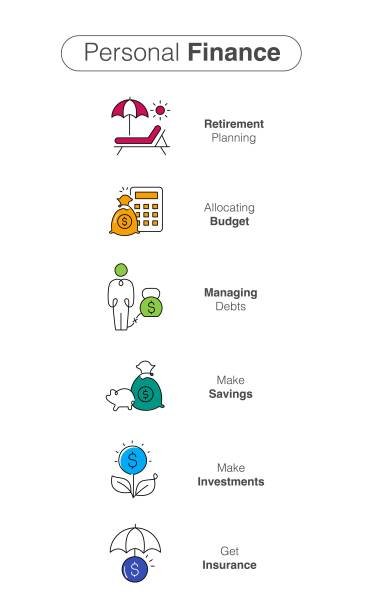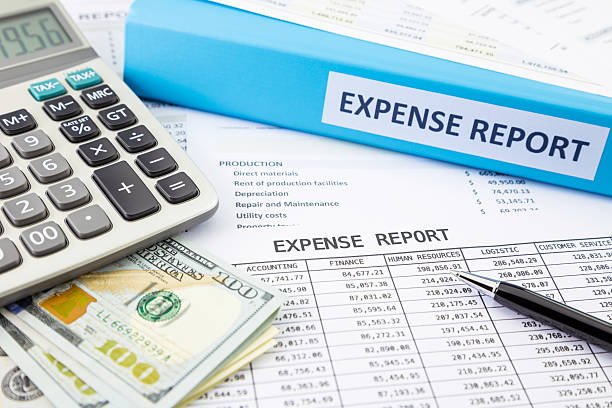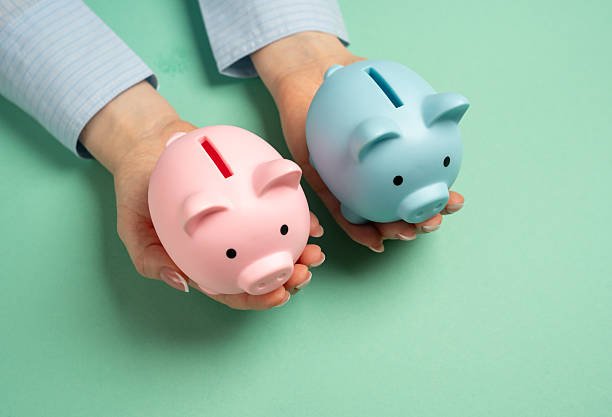Ever feel like your paycheck just vanishes into thin air? You get paid, you cover the big bills, and suddenly you’re left wondering where the rest of it went. In 2025, with rising costs and a lingering sense of financial uncertainty, that feeling is more common than ever.
To track your monthly expenses isn’t about restricting yourself—it’s about empowering yourself. It’s the first, most crucial step toward taking control of your financial destiny. In fact, a recent survey found that people who stick to a budget save hundreds more per month than those who don’t. Ready to stop guessing and start knowing? Let’s dive in.
Step 1: Preparing to Track Your Monthly
Before you can track, you need a clear picture of what you’re working with. This initial setup is a one-time task that makes everything else a breeze.
Gather Your Financial Info
Collect statements and login details for all the places your money lives and flows:
- Bank Accounts: Checking and savings.
- Credit Cards: All of them, from your daily driver to that store card you rarely use.
- Loans: Student loans, car payments, mortgage, personal loans.
- Income Sources: Pay stubs, freelance invoices, side hustle income.
Understand Fixed vs. Variable Expenses
Your expenses generally fall into two buckets:
- Fixed Expenses: These are the costs that stay the same every month. Think rent or mortgage, car payments, insurance premiums, and subscription services like Netflix. They are predictable and easy to budget for.
- Variable Expenses: These costs change from month to month. This includes groceries, gas, dining out, and entertainment. This is where most people find opportunities to save.

The Right Mindset: Empowerment, Not Restriction
The biggest hurdle to tracking expenses is often psychological. We worry we’ll feel guilty about our spending or that budgeting will be a chore. Reframe this in your mind. Tracking isn’t about judgment; it’s about awareness. You are simply collecting data to make smarter decisions that align with your goals, whether that’s saving for a vacation or finally paying off debt.
Step 2: Choosing Your Tracking Method
The best tracking method is the one you’ll actually stick with. There’s no single right answer, so consider what fits your personality.
The Main Methods
- Apps: Automated, convenient, and packed with features. They sync with your bank accounts, categorize spending for you, and generate insightful reports. This is the easiest way to start.
- Spreadsheets: Infinitely customizable and completely free. Perfect for the hands-on person who loves data and wants total control over their categories and reports.
- Paper-Based (Notebook/Journal): Simple and tangible. The physical act of writing down every purchase makes you highly aware of your spending habits.
A hybrid approach often works best. For example, use an app for automated tracking but a spreadsheet for a monthly “big picture” review.

For those who find digital tracking too abstract, embracing a physical system can be a game-changer. The cash envelope method, a time-tested strategy, forces you to be mindful of your spending in real-time. By allocating a set amount of cash for variable categories like ‘Groceries,’ ‘Dining Out,’ or ‘Entertainment’ at the beginning of the month, you can physically see your money dwindling. Once an envelope is empty, your spending in that category stops until the next month. You can find excellent, all-in-one cash envelope wallet systems on Amazon that come with a stylish binder, laminated envelopes, and budget sheets to make this method simple and organized
Top 5 Tracking Tools for 2025
- YNAB (You Need A Budget): Best for proactive budgeters. YNAB’s philosophy is to “give every dollar a job.” It’s less about tracking past spending and more about planning for future expenses.
- Ideal User: Individuals or couples serious about getting out of debt and changing their financial habits.
- Copilot Money: Best for a visual, all-in-one dashboard. It has a slick interface, tracks investments alongside spending, and uses AI to provide smart insights.
- Ideal User: The tech-savvy person who wants a beautiful, holistic view of their entire net worth.
- Rocket Money: Best for cutting bills and subscriptions. Its standout feature is identifying and helping you cancel recurring charges you may have forgotten about.
- Ideal User: Anyone who suspects they’re overpaying for bills or has a dozen subscriptions to manage.
- Empower (formerly Personal Capital): Best for investors. While it tracks spending, its real strength is in its powerful free tools for analyzing investment fees, tracking your net worth, and planning for retirement.
- Ideal User: Someone focused on long-term wealth building who wants to see how their daily spending impacts their bigger goals.
- Google Sheets / Microsoft Excel: Best for the DIY enthusiast. With countless free templates available online, you can build a system that is perfectly tailored to your life.
- Ideal User: The person who wants 100% control and doesn’t mind a bit of manual data entry.
Step 3: Categorizing Expenses Like a Pro
Once you see money going out, the next step is to organize it. This is how you turn raw data into actionable insights.
Needs vs. Wants vs. Savings (The 50/30/20 Rule)
A popular framework for categorizing is the 50/30/20 rule. It’s a simple guideline for allocating your after-tax income:
- 50% on Needs: Essentials like housing, utilities, groceries, transportation, and insurance.
- 30% on Wants: Discretionary spending like dining out, shopping, hobbies, and travel.
- 20% on Savings & Debt Repayment: Building your emergency fund, investing for retirement, and paying off credit cards or loans.
This is just a starting point. Feel free to adjust the percentages to fit your goals.

Customize Your Categories
Don’t be afraid to create categories that reflect your actual life. Instead of a generic “Shopping” category, you might have “Clothing,” “Home Goods,” and “Tech Gadgets.” If you have a dog, a “Pet Care” category is essential. The more specific your categories, the clearer your spending picture will be.
AI Tagging vs. Manual Work
Most budgeting apps use AI to automatically categorize your transactions. A charge from “Shell” will be tagged as “Gas,” for example. This is a huge time-saver, but it’s not perfect. Always take a few minutes each week to review the automatic tags and correct any mistakes.
Step 4: Tracking and Recording Expenses Consistently
Consistency is what turns tracking from a one-time project into a life-changing habit.
How Often Should You Track?
- Daily (5 minutes): At the end of each day, open your app or notebook and log any cash transactions. Review auto-categorized transactions for accuracy. This keeps the task small and manageable.
- Weekly (15-20 minutes): Set aside time every Sunday for a “money check-in.” Review the past week’s spending, see how you’re doing against your budget, and plan for the week ahead.

Overcoming Tracking Fatigue
It’s easy to fall off the wagon. Here’s how to stay on track:
- Automate Everything: Use an app that syncs with your bank so most of the work is done for you.
- Set Reminders: Put a recurring event on your calendar or set a daily phone alarm.
- Use Habit Stacking: Link your tracking habit to an existing one. For example: “After I brush my teeth at night, I will open my budgeting app for two minutes.”
Step 5: Reviewing Patterns and Adjusting Your Budget
The goal of tracking is to inform your decisions. Your monthly review is where the magic happens.
How to Analyze Your Data
Look at your spending reports. Where are the surprises? Did you spend way more on takeout than you realized? Are subscriptions costing more than you thought? Identifying these “spending leaks” is the first step to plugging them.

What to Do When Spending Gets Out of Control
Don’t panic or feel guilty. You haven’t failed. You’ve just discovered a problem area.
- Identify the Trigger: Why did you overspend? Was it stress, a social event, or poor planning?
- Make a Specific Plan: Instead of a vague “I’ll spend less,” create a concrete rule, like “I will pack my lunch three days a week” or “I will limit myself to two coffee shop visits per week.”
Your Budget Is a Living Document
Life changes, and so should your budget. Adjust it for seasonal changes (higher utility bills in winter), income fluctuations, or new financial goals. A budget isn’t a rigid cage; it’s a flexible plan.
Step 6: Leveraging Your Tracking for Broader Financial Health
Expense tracking isn’t just about the day-to-day. It’s the foundation for all of your major financial goals.
- Debt Payoff: By identifying an extra $150 in your budget, you can accelerate your debt repayment, saving you hundreds or thousands in interest.
- Building an Emergency Fund: Seeing exactly how much you can consistently save helps you build that crucial 3-6 month safety net faster.
- Retirement & Investing: Tracking helps you free up cash flow that can be funneled directly into your IRA, 401(k), or brokerage account.
- Tax Preparation: With a year’s worth of categorized expenses, finding tax-deductible items like business expenses or charitable donations becomes effortless.
When you meet with a financial advisor, bringing a detailed report of your income and expenses allows them to give you much more effective and personalized advice.

Bonus Section: Advanced Tips & Tools
Ready to level up? Try these pro techniques.
- Use AI to Forecast Spending: Some advanced apps analyze your past behavior to predict your future account balances and alert you if you’re on track to overspend.
- Smart Receipt Scanning: Use an app like Expensify or even your phone’s camera to digitize receipts on the go. This is a lifesaver for business expenses or warranty claims.
- Prioritize Security: When using digital trackers, always enable two-factor authentication (2FA) and use a strong, unique password. Be mindful of the permissions you grant any financial app.
- Collaborate with a Partner: Use tools like YNAB (which allows multiple users) or a shared spreadsheet to manage household finances together. Open communication about shared spending is key.
Conclusion & Your Action Plan
Tracking your expenses is the single most powerful habit you can build to improve your financial well-being. It replaces uncertainty with clarity and transforms financial stress into financial confidence.
You don’t need to be perfect. You just need to start.
Here’s your plan:
- Choose One Method: Pick an app or a spreadsheet—whatever feels easiest today.
- Connect Your Main Account: Link your primary checking account or credit card.
- Track for One Week: Don’t worry about the past. Just track every dollar for the next seven days.
That’s it. After one week, you’ll already know more about your money than ever before. Take that first small step now. Your future self will thank you.
Stop letting debt dictate your life. Discover the 7 proven strategies you can use to pay it off fast and finally achieve financial freedom in 2025.
